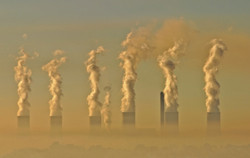Where to put the carbon
Carbon capture and storage (CCS) is a technology that can capture up to 90 % of the CO2 emissions produced from the use of fossil fuels. The CO2 produced in both electricity generation and industrial processes is captured, preventing it from entering the atmosphere. CCS can potentially reduce global emissions of CO2 by 20 %. The project 'Modeling and Understanding the Influence of Geological Complexity on CO2 Storage' (MUIGECCOS), funded by the EU, improved our understanding of the influence of the many factors involved in CO2 storage. The project focused initially on the transport processes on complex flows. The transient variations of the boundary conditions and hydraulic heterogeneity determine the complexity of flows. Researchers developed numerical simulations to determine both mean behaviour and global misgivings of the technology. Obtained on the Monte-Carlo derived upscaling laws, 'numerical experiment' results were interpreted at great length. The upscaling laws identified as suitable were either equal or effective. Important conclusions are summarised in two points. The first is the quantification of the deviation between the potential and effective mixings, useful for measuring when characterising chemical reactivity. This follows a generic trend with a steep increase in deviation over a short time when advective structures develop and a slow decrease when diffusion progressively homogenises these structures. The second conclusion is that spreading is not enough to predict mixing and reactivity. Simple measures are proposed as effective ways to characterise mixing and reactivity in different types of porous structures. Developing models that comply with dispersion and with mixing and chemical reactivity are important. A better understanding overall was developed on the storing of CO2. Further work will aim at determining how these tools can improve the design of injection strategies and the reliability of risk assessment predictions.
Keywords
Carbon dioxide, carbon capture and storage, CO2 emission, CO2 storage, geological storage

